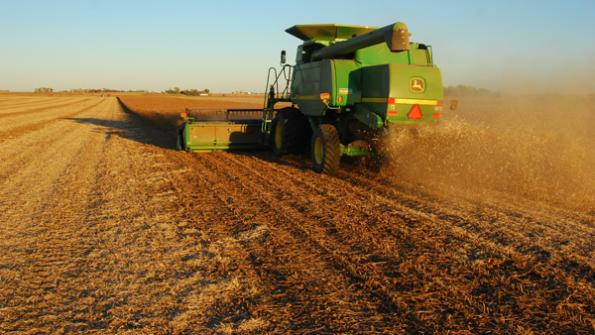September 25, 2015

Herbicide options and different sites of action may have some farmers forgoing fall herbicide application. However, Mark Loux, Ohio State University Extension, says that fall herbicide treatments may be beneficial in cases. Here are some considerations before you wash your hands of fall application.
1. Fall herbicide treatments initially caught on to remedy the problem of having a lot of weed cover in no-till fields in spring, which caused problems with tillage and planting and harbored insects and soybean cyst nematode. Not every no-till field needs fall treatment but it’s really handy for the ones that do have a lot of winter weeds. Spring burndown treatments often don’t control and dry down weeds fast enough to solve this problem.
2. Fall is still the key time to control tough biennials and cool-season perennials – wild carrot, poison hemlock, dandelion, etc. Spring/summer treatments of 2,4-D or dicamba won’t necessarily be as effective.
3. A spring application of dicamba/glyphosate often adequately controls marestail, even in the absence of treatment the previous fall. However, variability of marestail control with spring-applied 2,4-D/glyphosate has been a major problem in Ohio, primarily in fields not treated the previous fall or those not treated until sometime in May. A POST application of Enlist Duo tends to finish off the marestail that survive an application of 2,4-D/glyphosate earlier in spring. However, the need to make two applications of Enlist Duo to control plants that were there at the time of the first application is fairly guaranteed to result in the development of 2,4-D resistance (the “resistance is us” program). Keeping fall herbicide treatments in the program should go a long way toward avoiding this problem, although not if 2,4-D is the primary herbicide controlling marestail in fall, also.
4. We have been using a lot of 2,4-D in fall and spring burndown treatments, and now we will have the option to use even more with POST treatments to Enlist soybeans. The same can be said for dicamba – it has been used in fall treatments (usually with 2,4-D) and now we can make multiple applications from fall through summer. Overuse of these herbicides for control of marestail will certainly induce selection for resistance, and its also possible that there are already populations of marestail with reduced response to 2,4-D.
Preventing this from occurring will require: 1) keeping residual herbicides in the spring applications, which can reduce the need for POST application of 2,4-D or dicamba; and 2) including some other herbicides with foliar activity on marestail to mix with or replace 2,4-D/dicamba in certain applications. Examples: including Sharpen in the spring burndown; replacing glyphosate with glufosinate in POST applications to Enlist soybeans. The goal here will be to mix it up where it makes sense to do so, without making programs more expensive.
You May Also Like




